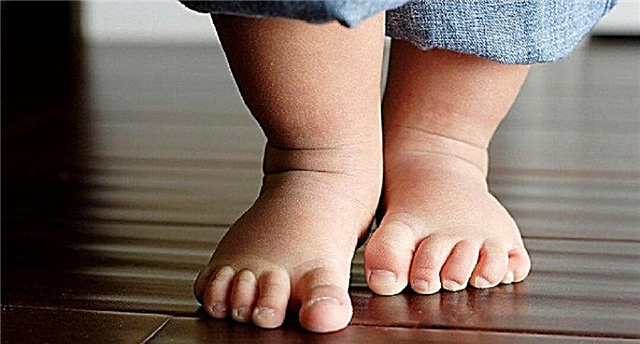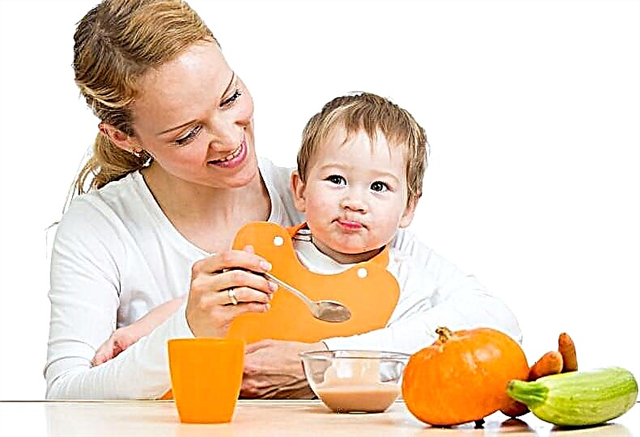
Worms are a common problem in childhood. Children become infected with helminths through dirty vegetables, unwashed hands, licking objects raised from the ground, and other factors. The disease can be suspected by a change in the child's well-being and his stool, complaints of nausea, headache and other ailments.
They help to confirm the presence of parasites in the baby's body fecal tests, which are advised to take not one, but several times. After detecting helminths, the doctor must prescribe to the child one of the drugs that affect them and relieve the little patient of the parasites. These drugs include Pirantel. What worms does this medication act on, in what dosages is it prescribed for children and how to give such a medicine correctly?


Release form
Pirantel produces several pharmaceutical companies, including both Russian and foreign (Poland, India). The drug is:
- In liquid form. Such a drug is a characteristically odorless homogeneous liquid with a light yellow tint. During storage, the suspension may separate into water and sediment, but after agitation it becomes homogeneous again. One bottle can hold 5 to 25 ml of medication, but 15 ml bottles are most common. In the box you can see a measuring cup or spoon. Such a measure holds 5 ml and has a 2.5 ml mark, so the medication is easy to dispense for a child of any age.
- In solid form... Such Pirantel is represented by yellow tablets, which are both round and oval. One package contains from 3 to 30 tablets, but most often you can find packs of 3 in the pharmacy.


There are no forms of medicine such as syrup, capsules, drops or injections.
Composition
The action of any form of Pirantel is provided by a substance with the same name - it is pyrantela pamoate. Its amount in 5 milliliters of suspension is 250 mg. The same amount of active ingredient is in one tablet.
The auxiliary components of liquid Pyrantel are sorbitol, sucrose, water, flavor, glycerin and other compounds.
In tablets, the main ingredient is supplemented with talc, starch, magnesium stearate and other substances. Additional components differ from manufacturer to manufacturer, and if the child has a tendency to allergies, then it is important to clarify the composition of the purchased medicine before giving it to the child.

Operating principle
The spectrum of action of Pirantel is called wide, since such a substance effectively affects different types of worms, including pinworms, hookworms, roundworms and other helminths.
Once in the intestines of the child, the medicine is almost not absorbed, but acts mainly on helminths. Under its action, a neuromuscular blockade occurs in their bodies, and paralyzed parasites leave the child's body with feces during bowel movements for several days after ingestion.
Spasms and intestinal obstruction during treatment with such a remedy do not occur, since Pirantel does not affect intestinal function. The drug absorbed in a small amount enters the liver and is partially metabolized there, therefore, diseases of such an organ can affect therapy.

Although the drug is unable to kill the migratory worm larvae, it does a good job against mature forms and parasites that have already begun to develop.
Indications
The use of Pirantel is justified:
- With enterobiasis. This disease caused by pinworms is diagnosed very often in childhood. It is usually manifested by intestinal disorders and severe itching in the anal area.
- With ascariasis. This is also a very common helminthic invasion that roundworms provoke. Symptoms of the disease are nausea, cough, fever, lethargy, loss of appetite, and other ailments.
- With ankylostomiasis. The cause of this infection is the duodenal hookworm. The pathology is characterized by bloating, nausea, skin rash, stool changes, fever, and other symptoms.
- With non-coronary disease. This helminthiasis is caused by hookworms of the New World, provoking an allergic reaction, dyspepsia and anemia in the child.

Can it be used for prevention?
Pirantel is prescribed not only when helminths are found after tests, but also as a prophylactic agent. Doctors often prescribe such a medicine to a child who lives in the same house with a sick person (if the worms are detected in one of the close relatives).
But many mothers often want to give the medication prophylactically and in such cases:
- if the child constantly communicates with pets and street animals;
- if the baby regularly visits the children's team;
- if the child often plays in the sandbox and on the street;
- if the baby is in the country, in the forest or other conditions of the wild environment.


However, most doctors advise against giving Pirantel to such children for prophylaxis. If the mother suspects a helminth infection, it is best to get tested and confirm the presence of infection, and then treat the baby with one of the anthelmintic drugs.
In other cases, according to parasitologists, to prevent helminthiasis, general preventive measures are sufficient:
- wash your hands after walking and using the toilet;
- wash fruits and vegetables;
- thermally process fish and other raw products;
- make sure that the child does not take contaminated toys, sand and other objects into his mouth;
- be regularly examined by a doctor and take a stool test (at least once a year).

At what age is it assigned?
According to the annotation for Pirantel in liquid form, the suspension is not advised to be given to children under 6 months. For babies up to six months, the drug is not contraindicated, but it is prescribed in rare cases and is given only under the supervision of a specialist.
Babies from 6 months to 6 years old should also be given medication with increased caution.
Pirantel tablets are prescribed from 3 years old if the child does not protest against the solid form. In practice, in most cases, children 3-6 years old are given a suspension, since it is easier to swallow it, and the side effects of such a drug are less common.
Children over six years old, as well as adults, are equally often prescribed both a tablet form and a suspension.

Pros of the drug
Pirantel is chosen as an anthelmintic drug for such reasons:
- this drug is effective against many types of worms, among which there are the most common pathogens of helminthiasis in children (such worms are roundworms and pinworms);
- the drug is classified as low-toxic, because it is absorbed in the digestive tract in a minimal amount and does not in any way affect the work of the child's internal organs;
- due to the presence of two forms, the drug can be given at any age, choosing a remedy for both a baby and a preschooler or teenager;
- the medication acts only on parasites and is excreted from the body within 24 hours;
- since Pirantel does not kill roundworms, but only paralyzes them, then intoxication from the decomposition of dead parasites does not arise;
- the drug has an affordable price, and since it is produced by several companies, it is almost always available in pharmacies.

Contraindications
Pirantel should not be used in children who have an intolerance to any of the ingredients in the chosen form of medication. In addition, all types of the drug are contraindicated in children with myasthenia gravis during the period of treatment of such a disease.
It is not recommended to take Pirantel for patients with hepatic insufficiency, because normal liver function is important for the timely change of the active substance and its removal from the human body.
Side effects
The medication is often well tolerated, but in some cases it can worsen the child's condition:
- in the treatment of Pirantel, a negative reaction of the gastrointestinal tract occurs in the form of stool thinning, decreased appetite, abdominal pain, vomiting and other symptoms;
- occasionally, the use of the drug causes a skin rash, fever, urticaria or other allergic reaction;
- in some children, taking medication negatively affects the central nervous system, causing paresthesias, a feeling of weakness, headache, hallucinations, and other symptoms.

If any of these side effects occur after using Pirantel, you should show the child to a doctor and not use such an anthelmintic agent in the future, replacing it with analogues that will no less effectively cope with helminthic invasion.
Which shape should you choose?
If the child is not yet three years old, then it is permissible for him to give an exclusively liquid version of Pirantel, but for three-year-olds and older children there is the possibility of using both a suspension and a tablet medicine.
Each of the forms has both pros and cons. For example, it is easier for a child to swallow a suspension than to chew a large enough tablet well.
However, some children strongly protest against any syrups and suspensions, preferring solid medicine. It is more convenient for such patients to give tablets of Pirantel. Tablets cost a little less than a suspension, therefore, for patients who treat both forms equally, they also often buy Pirantel in tablets.

We also note that for young children 3-6 years old, a liquid medication is more often chosen, also because it has a less aggressive effect on the gastric mucosa.
Instructions for use
The drug is used in children, taking into account the following nuances:
- In most cases, the drug is prescribed once, that is, the suspension or tablets in the required dose are taken at a time. Only for some pathologies Pirantel is drunk for several days, but such a treatment should be prescribed by a doctor.
- The suspension must be shaken before taking it so that its components are well mixed. If the medicine is given for 2 or 3 days, shaking is required before each use.
- The tablet should be chewed and then washed down with a glass of water.

- The medication can be given to the child at night or at any other time. Reception should be either with meals or after meals. The combination of Pirantel with laxatives is not required.
- If pinworms are detected in a small patient, it is recommended to give the drug not only to the child, but also to the family members living with him.
- In order to prevent re-infection, three weeks after taking Pirantel for the first time, the medicine can be given again in the same dose.
- To make sure that the medication is effective, it is recommended that stool tests be performed 2 weeks after using the suspension or tablets.
The dosage in childhood is determined by weight, as well as depending on the diagnosis. If a child has ascariasis or pinworms, then he is given 10 mg per 1 kg once. If hookworms are detected in a small patient, the dose can be increased to 20 mg / kg, and the drug must be given for the second day in a row, and sometimes for three days.


Most often, when prescribing a suspension, the drug is used in the following dosages:
- for a child of 6 months - 2 years with a weight of less than 12 kg - 2.5 ml (half of the measurement);
- for a child 2-6 years old weighing more than 12 kg - 5 ml (one measure);
- for a child 6-12 years old - 10 ml (2 measurements at once);
- for a child over 12 years old - 15 ml (3 measurements at once).
When treating with tablets, Pirantel is used in the following doses:
- A child 3-6 years old is given one tablet;
- A child aged 6 to 12 years is given two tablets at the same time;
- A teenager over 12 years old is given three tablets at once.

Overdose
Until that time, there were no cases when Pirantel in a high dose had a toxic effect. If a child accidentally takes such a medication in an excessively large dosage, he is advised to induce vomiting, and for any symptoms of malaise, it is worth showing the baby to a specialist.
Interaction with other medications
The simultaneous use of Pirantel and other antihelminthics without a doctor's prescription is not recommended, as this can increase the load on the liver or weaken the effect of medications. In addition, you should not combine Pirantel and theophylline preparations, so as not to cause side effects.

Terms of sale
Any form of Pirantel is sold only by prescription, so before going to the pharmacy, you should visit a pediatrician, gastroenterologist, or some other specialist.
The cost of a medicine is affected by the form of release, the manufacturer, and the packaging. On average, for 15 milliliters of suspension you need to pay 30-60 rubles, and a pack of 3 tablets costs 20-40 rubles.
Storage conditions
The shelf life of both forms of Pirantel is 3 years. Until it expires, it is necessary to keep the medication at home at a temperature below 25 degrees Celsius, out of the reach of children. The medicine should not be exposed to direct sunlight during storage.

Reviews
There are many good reviews about the use of Pirantel in children with helminthiasis. They call the drug affordable and effective. Moms often choose a suspension, because this liquid form can be given even to infants, and it is easy to dose it. Tablets are often preferred for the treatment of children over 6 years old.
The disadvantages of the drug include side effects. Although rare, the medication can provoke diarrhea, nausea, fever, weakness and other negative symptoms. In addition, many children do not like the taste of Pirantel, and the tablets are large and difficult to chew (especially if you need to take several pieces at once).

Analogs
The same active ingredient as Pirantel is found in a French medicine called Helmintox. This medication is also presented in two forms, it is prescribed for the same helminthiases and is used from 6 months of age (in the form of a suspension).
Its differences are only a different composition of auxiliary components, as well as a higher cost.
Instead of Pirantel in the treatment of worms, drugs with a different composition can also be used, for example:
- Vermox or Wormin. Such medicines in tablets contain mebendazole and help with teniasis, ascariasis and other helminthiases, including mixed ones.
- Nemozole or Sanoxal. These drugs based on albendazole in tablets and suspensions are used not only for various helminthic invasions, but also for giardiasis.
- Dekaris. The basis of such a medicine is levamisole, which is effective against ascaris and hookworm.
- Piperazine. This medication is in demand for enterobiasis and ascariasis.


The choice of any of these analogs should be carried out by a doctor, because they have different age ranges and have their own peculiarities of use. Giving any of these products without a doctor's prescription is not recommended.




